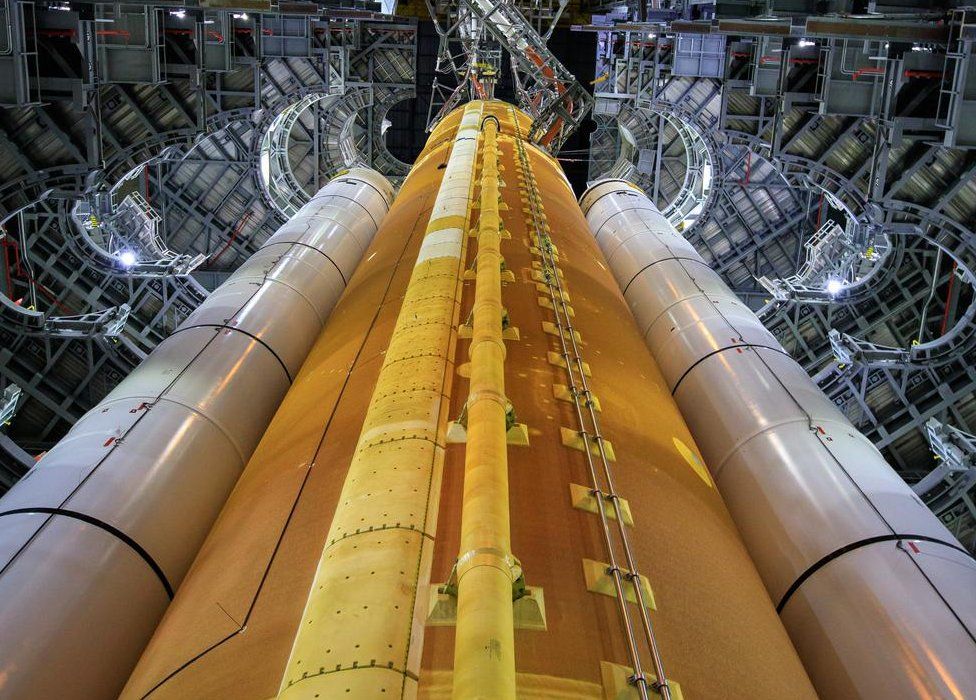Nasa has fixed a problem with malfunctioning equipment on a new rocket designed to take astronauts to the Moon.
The National Aeronautics and Space Administration has been preparing the giant Space Launch System (SLS) for its maiden flight, set for March.
Last month, it identified a glitch with an onboard engine controller.
But the component has now been replaced and all four engine controllers performed well in tests last week.
They act as the “brains” for each of the powerful RS-25 engines, which help propel the SLS into orbit, communicating with the rocket to provide precision control of the engine and diagnose any problems.
At the end of last year, some electronics on the controller for engine four failed to power up consistently during a test.

But last week, all the controllers were powered up and performed as expected while engineers put them through their paces in further testing.
The SLS is housed in the Vehicle Assembly Building (VAB) at Nasa’s Kennedy Space Center, in Florida.
When the Orion spacecraft is stacked on top, the full system stands 98m (322ft) high – taller than the Statue of Liberty.
This version of the SLS will generate a whopping 8,800,000lb (39.1meganewtons) of thrust.
This is 15% more than the powerful Saturn V launcher that lofted people to the Moon in the 1960s and 70s.
This SLS is being prepared for a mission called Artemis-1, which will see the rocket launch Nasa’s Orion spacecraft towards the Moon.

The mission is intended to test SLS and Orion systems ahead of the first crewed launch, in 2024.
The culmination of testing for the Artemis-1 hardware is the wet dress rehearsal, where the SLS is rolled out to the launch pad at Kennedy and loaded with its cryogenic (cold) liquid propellants.
The mission known as Artemis-3 will see the first people land on the lunar surface since the Apollo 17 mission, in 1972.
It could launch in 2025, if all goes well.
The crew members who will touch down on the Moon as part of this mission have yet to be announced but Nasa is training a select pool of astronauts to fly the Orion spacecraft.
Follow Paul on Twitter.


























